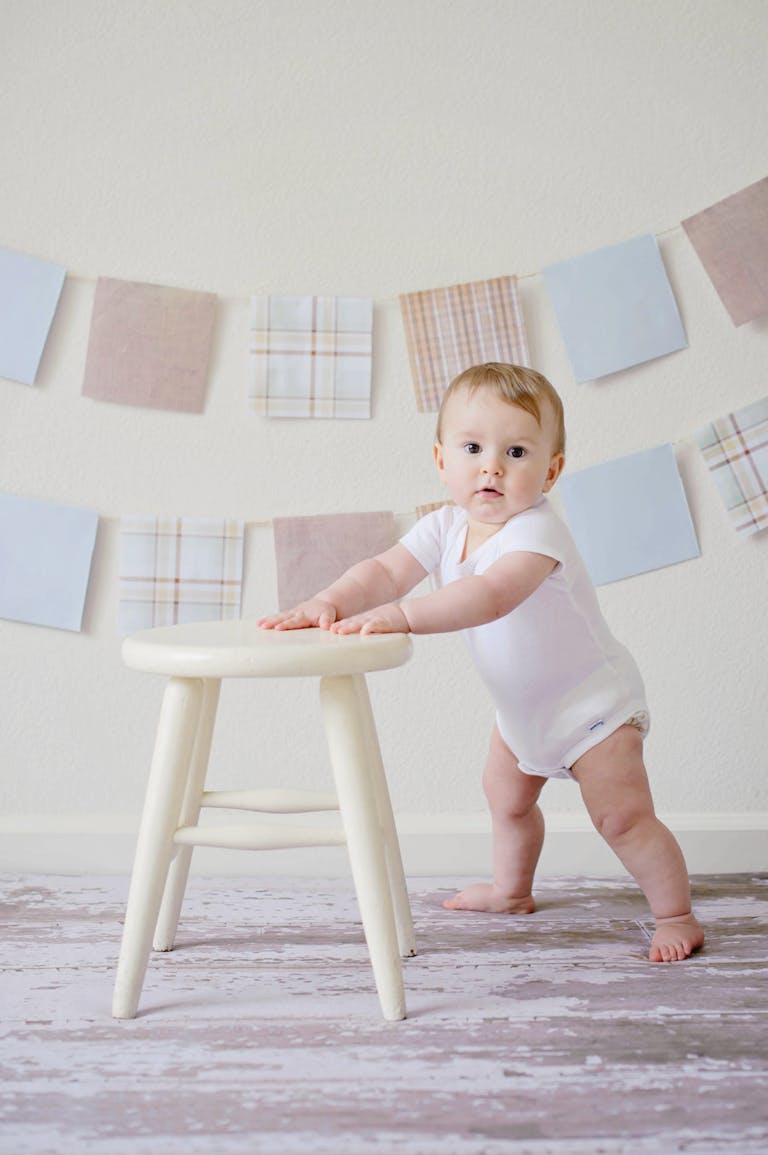Between bursts of laughter, cries of frustration, and the first don’t-touch-that experiments, life with an 11 month old baby can feel like living alongside a tornado disguised as a tiny human. Questions about mobility, nutrition, sleep, and safety become part of your daily routine. You might find yourself marveling at the ever-increasing independence, while quietly worrying about delays, challenging nap times, or the handful of peas now scattered under the high chair. This period weaves physical and emotional leaps with the everyday curiosity that defines early childhood. Each point of progress can be exhilarating—and a little daunting. What is truly normal for an 11 month old baby? What signs deserve more attention? And how can medical research illuminate these milestones? Let’s untangle these worries and offer empathy, science, and actionable guidance for what matters most in this whirlwind chapter.
Key developmental leaps and emerging independence
By 11 months, babies often become explorers-in-chief. The relentless urge to stand, pull up, and “cruise” along the sofa signals that new neural pathways are firing—rapid myelination in the brain’s motor cortex lays the groundwork for balance and gait. While some 11 month old babies may take tentative unaided steps, others happily crawl or scoot along, combining strength and precision in surprising new ways. This diversity is normal; a wide developmental window exists, and what matters is steady progress, not adherence to a rigid timetable.
The pincer grasp—where thumb and forefinger meet with near-surgical precision—typically appears now, allowing babies to pluck up crumbs, stack rings, or attempt to spear bits of avocado with a miniature fork. Such dexterity heralds important neural integration, but it also means greater vigilance for choking hazards. Expect both success and frustration as babies gain—then immediately test—their independence. Curiosity about every drawer, electrical socket, and dust bunny is now a daily theme.
Language, too, is becoming more intentional. While the vocabulary for most 11 month old babies still centers around expressive babbling and the occasional “mama” or “dada,” the foundation for receptive language is expanding rapidly. Emotional growth is just as marked: separation distress may increase, clinging becomes common, and imitation times are in full bloom. Do you notice your child waving goodbye, or shaking their head to refuse more peas? These gestures are not just charming, but represent acquiring social skills and establishing the early architecture for communication.
Growth patterns, muscle strength, and motor skills
The lightning-fast weight gain of infancy slows down by 11 months, while the focus pivots to muscle development. As bones lengthen and muscles adapt to new demands, expect more confident sitting, efficient crawling, and those precarious—but thrilling—attempts to walk with support. The obvious signs? A baby that can pull up with ease, cruise laterally along the furniture, and maybe even balance, unassisted, for a moment or two before toppling into your arms.
Fine motor achievements at this age are not to be overlooked. The 11 month old baby is now able to stack blocks, turn pages in board books, and try self-feeding routines with varying degrees of messiness. Holding baby-friendly utensils or sippy cups becomes a coveted goal (even if gravity still wins the day). Encouragement, not perfection, should be your mantra; fostering autonomy through repeated attempts is as important as success.
Cognitive development: object permanence and curiosity
What is going on inside that busy mind? The concept of object permanence—knowing something exists even when out of sight—is now firmly established for most 11 month old babies. This epistemological leap explains why hiding a toy beneath a blanket results in enthusiastic searching. Simple games like peekaboo and hide-and-seek become both educational and profoundly entertaining.
The frontal cortex continues building connections required for problem solving and exploratory behavior. Sensory play is especially engaging: a soft rattle, a cup of water to splash, the gritty texture of rice—each sensation is a laboratory for neural development. Early pretend play emerges, reflecting the beginning of imagination, while cause-and-effect learning (banging a spoon to create sound, dropping food to watch it fall) takes center stage in kitchen and living room alike.
Social and emotional development: bonds, boundaries, and empathy
You might already notice affection developing at dizzying speed. Your 11 month old baby may greet you with beams of joy at pickup, throw themselves into your arms during moments of tiredness, or exhibit separation distress in unfamiliar settings. This attachment phase, underpinned by growth in the limbic system, fosters a secure sense of self and predicts future healthy relationships.
At this stage, empathy and emotional mimicry first emerge. It might be as subtle as reaching out to comfort another crying child, or simply mirroring your expressions during play. These skills lay the emotional groundwork for later social interactions. While frustration can run high—especially as desires outstrip verbal skills—your patient support helps soothe tantrums and celebrate new milestones.
Language, understanding, and early communication
Even as an 11 month old baby unleashes delightful streams of babble, much of the linguistic development is happening invisibly—inside the growing web of neurons in the temporal and parietal lobes. Receptive language outpaces expressive language; most children understand far more than they can say. Listen closely: simple words like “no,” “bye-bye,” or favorite names become familiar cues, prompting reactions, smiles, or attempts to imitate.
Medical research tells us that daily exposure to speech—narrating tasks, reading, singing, and gesturing—greatly enhances vocabulary acquisition and speech recognition pathways. Even a one-sided conversation about the laundry or grocery list provides valuable linguistic input. Don’t worry if “mama” and “dada” remain the only recognizable words just yet—the range of “normal” is broad.
Day structure, daily routines, and supportive play
A predictable daily routine brings comfort, not just for your 11 month old baby, but for anyone managing nap schedules and meal prep. Alternating interactive playtime with moments for independent exploration (observed from afar) cultivates both resilience and autonomy.
Motor play is a highlight now. Push toys and secure walkers encourage standing and stepping, while simple stacking toys, ring sorters, and large-nub puzzles refine dexterity and object manipulation. Early “adult imitation” games—brushing a doll’s hair, dialing a toy phone—extend social and cognitive skills. Rotating toys and activities helps hold waning attention and introduces novelty.
Supporting progress is less about directed instruction and more about facilitating joyful attempts. Invite your baby to help put toys away, praise their self-feeding efforts, and encourage exploration—with babyproofing, of course (see below). Describing your actions, labeling new objects, and using animated tone further strengthen communication and emotional bonds.
Nutrition, feeding, and building autonomy at the table
At 11 months, nutrition takes on new complexity. Most 11 month old babies still require 500–700 ml of milk daily, whether via breastfeeding or age-appropriate formula. For those mixing feeds, morning and evening are common windows for these milk sessions.
Transitioning toward family foods, offer roughly 25 grams of meat or fish (or equivalent plant-based protein), with 200–250 grams of chopped vegetables. Cow’s milk remains unsuitable as a primary drink before age one, due to its lower iron content. Instead, focus on diverse textures, bright colors, and finger-friendly servings. Encourage self-feeding—however messy it gets! It’s a cornerstone for independence and fine motor growth.
For babies avoiding animal protein, a pediatric consult helps prevent iron or B12 deficiencies, as these nutrients are vital for neurological function. Regularly introduce rejected foods; preference often changes with repeated exposure. Never pressure; mealtimes are for exploration and pleasure, not battles.
Sleep routines, sleep needs, and common challenges
Quality sleep is the silent partner in healthy development. Most 11 month old babies need 10–12 hours at night, plus one or two daytime naps. Consistency is more important than schedule perfection. Evening cues—warm bath, story, calming song—help signal the shift from activity to rest. According to pediatric sleep research, these “sleep associations” reduce bedtime protests and help babies fall back asleep on their own after brief night wakings.
Common disruptions at this age include separation anxiety and teething, often causing increased night wakings or difficulty settling. Stay calm, keep interventions gentle (low light, soft voice, minimal stimulation), and persist with the soothing bedtime ritual. Eventually, those sleep hormones—melatonin and cortisol—will recalibrate.
A safe sleep environment is non-negotiable: firm mattress, no loose bedding or toys, and a comfortably cool bedroom. The risk of sudden infant death syndrome (SIDS) falls by 11 months but is not zero; following recommended sleep safety reduces anxiety and supports peaceful nights.
Health, hygiene, and safety strategies
Routine medical check-ups offer opportunities to track growth parameters (weight, length, head circumference) and review developmental milestones. By now, oral hygiene should have started—even before teeth have fully erupted—a soft brush or damp gauze to clean gums is sufficient at first. Once teeth appear, use a smear of fluoride toothpaste.
Teething symptoms, including swollen gums and red cheeks, can bring distress. Research supports chilled (not frozen) teething toys and gentle gum massages as effective comfort measures. Acetaminophen (paracetamol) is occasionally helpful, but always consult a pediatrician before medicating.
Oral thrush, a yeast infection identifiable by white patches in the mouth, can cause discomfort, especially after antibiotic use. Thoroughly clean pacifiers and bottles and seek antifungal treatment if symptoms persist; recurrent cases may warrant further evaluation.
With new mobility, accident prevention becomes an ever-present concern. Fix furniture to walls, cover sharp corners, use stair gates, and ensure all hazardous objects are out of reach. Sturdy car seats and sun protection gear are necessary for outings. Emergency phone numbers and a well-stocked first-aid kit should always be at hand.
Supporting individuality and seeking guidance
No 11 month old baby develops on an identical trajectory. Individual quirks, delays, and preferences are often typical variations, not problems requiring urgent correction. Rather than compare milestones, focus on nurturing progress, gently guiding toward new experiences, and responding to your baby’s signals. If specific concerns persist—or if questions about feeding, sleep, or behavior create ongoing worry—consult with a trusted pediatrician. Empathy, science, and attentive observation are your best guideposts through this vibrant period.
Key takeaways
- Every 11 month old baby is a unique combination of mobility, curiosity, independence, and social engagement—notice and celebrate each new stage.
- Maintain a balance between breastmilk or formula and a diverse array of safe, age-appropriate solid foods. For every meal, supervise closely and avoid small, hard foods that can cause airway blockages.
- Encourage self-confidence and autonomy through play, solo feeding, gentle exploration, and consistent praise. Small successes matter.
- Support sleep with calming rituals, patience during regressions, and sleep environments that prioritize safety.
- Babyproof every space, anticipating newly acquired skills—mobility and curiosity can outpace parental predictions!
- Early language, cognitive, and emotional development accelerate now. Fuel these leaps with music, stories, sensory-rich play, and responsive conversation.
- Seek answers when needed. If uncertainty or concern about your 11 month old baby’s health or development arises, reach out to a pediatrician for clarity and reassurance.
- The journey through this stage is complex and rewarding. Discover tailored advice and free health questionnaires for your child by downloading the Heloa app.
Can each day feel overwhelming? Sometimes. Can the ordinary moments—first steps, new words, a sudden smile—make all the difference? Absolutely. Cherish the wonders and weather the worries; you are supporting an extraordinary transformation.
Questions Parents Ask
What finger foods can I safely give my 11 month old baby?
At 11 months, many babies are eager to experiment with feeding themselves. You can offer soft, bite-sized pieces of cooked vegetables like carrots or zucchini, small cubes of ripe fruit such as banana, pear, or peaches, shredded chicken, tender pasta, or well-cooked lentils. Toast strips, scrambled eggs, and small pieces of cheese are usually well-received too. Always supervise closely and avoid foods that are hard, round, or sticky—like whole grapes, nuts, popcorn, or thick nut butters—since they can increase the risk of choking. Try to vary textures and colors: it’s an exciting way for little ones to discover new tastes safely.
What is the average weight for an 11 month old baby?
At this age, a typical weight can range from about 8.5 to 10 kg (around 19 to 22 pounds), but keep in mind, every child grows at their own pace. Some healthy babies may fall above or below these numbers. What’s essential is steady growth along their unique percentile curve. If you’re ever unsure or notice a sudden change in weight, sharing your observations with a healthcare professional is always a good idea.
How can I encourage my 11 month old baby to start walking?
Supporting early walking can feel both exciting and a bit stressful. Babies often begin by pulling themselves up and cruising along furniture. You can help by offering sturdy furniture for support, holding their hands as they take a few steps, or providing push toys for guidance. Letting your baby spend time barefoot can also improve their balance and coordination. Remember, walking is a big step—some little ones are eager, while others take their time. Rassurez-vous, each baby moves forward at their own rhythm, and patient encouragement makes all the difference.










